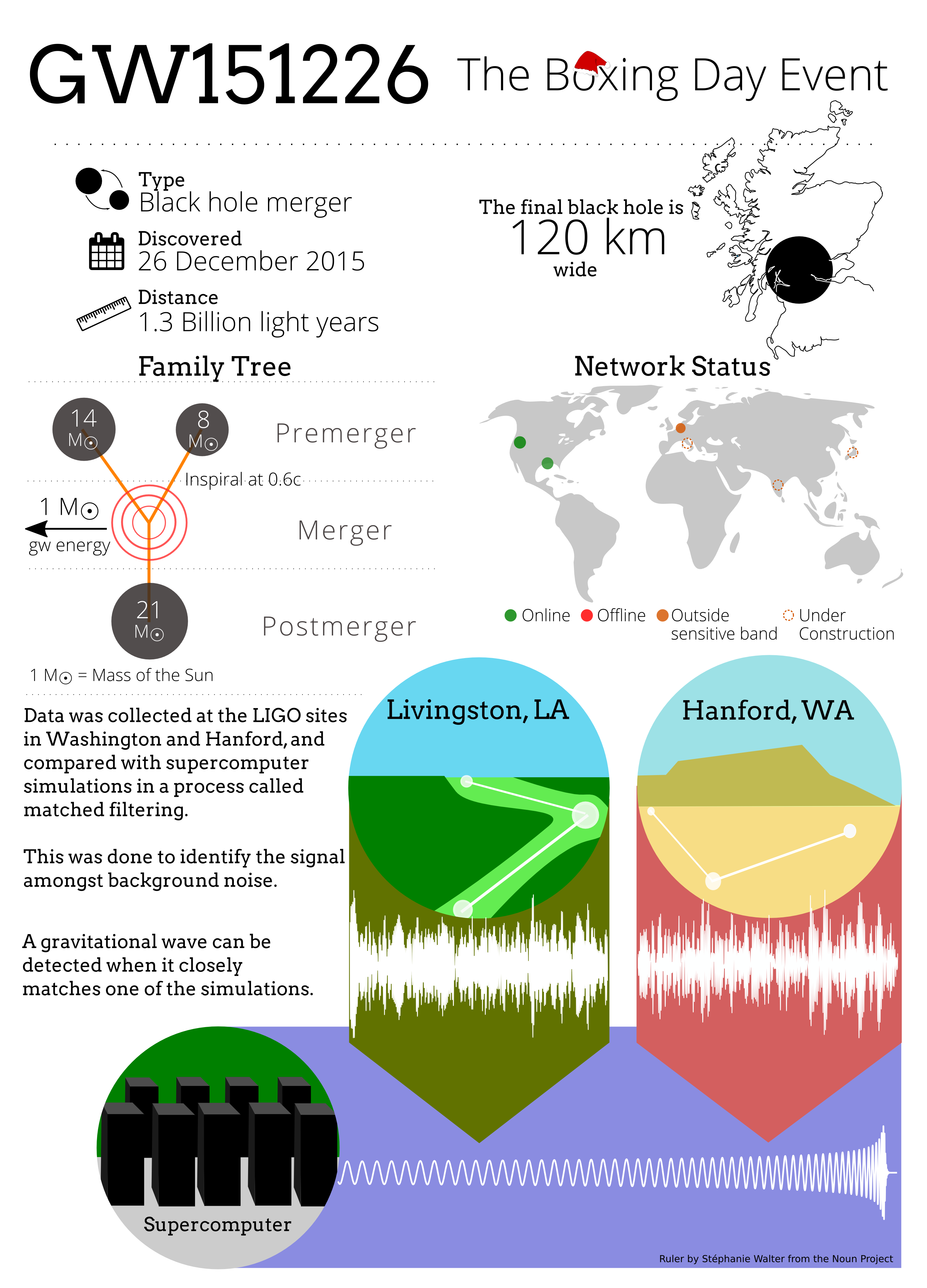Just shy of six months ago I was at my parents’ house in rural Northern Ireland, nursing a very full stomach, and admiring a large pile of chocolates, and taking a break from Christmas festivities. In fact, it was slightly worse than that; I was starting to make plots for the Burst “companion paper”,now published in PRD!, so I really hadn’t given myself very much time to relax.
As a result of all of this I was aware of some chatter over email about another interesting looking trigger, and before long it became clear that this was something of a Christmas present for us gravitational waves people: it was another binary black hole. A second one, before we’d even had a chance to announce the first. As it became clear that this was a real event it started being tagged the “Christmas Day Event” (it was observed on 25 December local time at the observatories), until somebody burst the bubble, and reminded everyone that we name events based on their time in UT, which put it around 3.30 am on 26 December. Boxing Day. As a result the LSC is today presenting the Boxing Day Event (without any hint of a sale). GW151226, as it’s known to people who love their names with long strings of digits (and people who don’t revel in the joys of Boxing Day) is a very different beast to the one which was unveiled back in February.

GW151226: An Infographic
GW151226 was a second confirmed binary black hole (BBH) merger (and quite possibly the third we’ve detected, as there was an event seen by both detectors in October 2015 which was consistent with being a BBH merger, but wasn’t detected strongly enough for us to be certain.
The event was produced by a pair of black holes which had substantially smaller masses than the pair involved in our first detection, and this meant that the signal was much weaker, and harder to pick-out from the background noise in the detectors. As a result it was the first detection which required a technique called matched filtering to pull the signal out of the data from the detector.
Matched filtering works by taking a set of known waveforms, in this case waveforms which are produced by supercomputers, which have run simulations of different combinations of black hole masses and spins. This allows us to work out what the gravitational waves from hundreds of different possible scenarios would look like, and we search through our data for all of them. This is a much slower process than the techniques which identified GW150914, and it took 70 seconds for the event to be found in the data.
Because of the smaller black hole masses the merger happened at a considerably higher gravitational wave frequency (the smaller the black holes are, the closer they can get without merging, and so the faster they can orbit each other) than the September event, and so we saw 55 orbits of the system before the black holes merged, which allowed some of the parameters of the system to be estimated better than GW150914 allowed (however the merger of the Boxing Day event also happened at a frequency where the detector is less sensitive, which makes the total mass of the system, and the ratio of the two pre-merger black holes’ masses harder to measure.
The announcement paper for GW151226 can be found in Physical Review Letters here.
Share Share Share